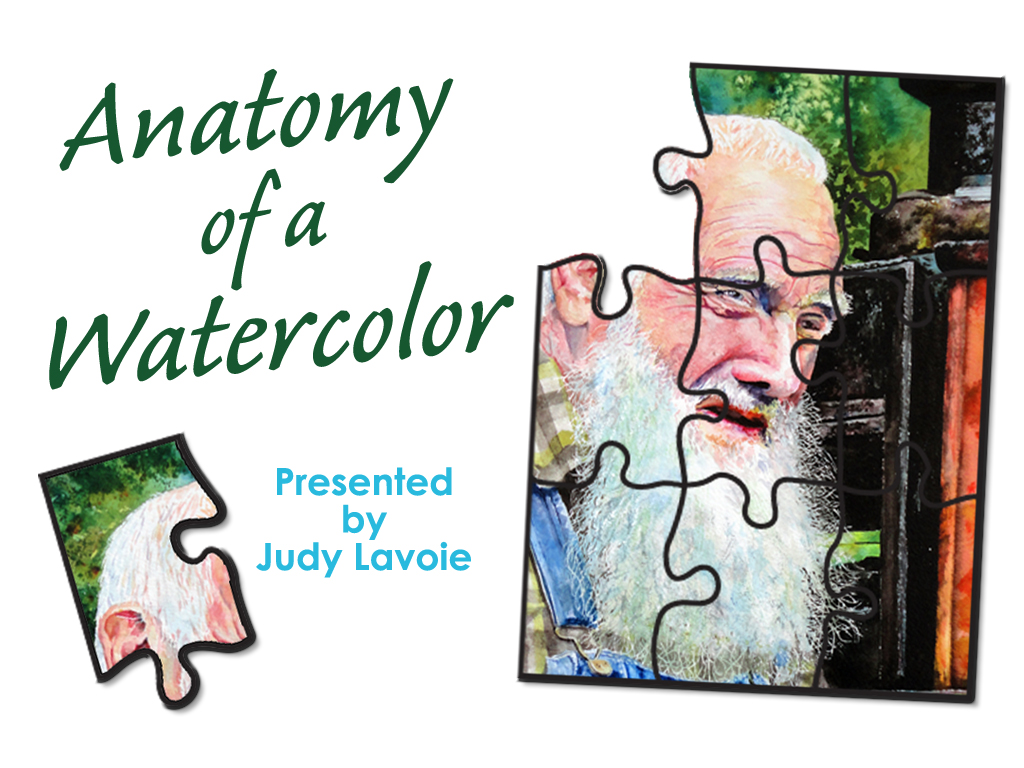I have several answers to this question:
It takes me many many hours to create a painting. My work is detailed and realistic, and I spend time perfecting even the minor features, which might not matter to anyone but me. I’ve discovered that a small painting does not necessarily take a small amount of time - size is not always a factor. My scratchboards generally take longer to create than my works in other media, since the details are usually extra-fine.
I do not log my hours while creating a painting, so I don’t know the total time. When you are pursuing your passion, time flies by and the rest of your life seems to be put on hold. Also, I don’t have a set schedule for my art. One day I might just have 20 minutes to work on a piece. Other times I can paint for several hours, for several days in a row. Or I may go for a few weeks with no painting time at all. I also question what activities would be counted in the total time to create a painting: taking reference photos? working up a pleasing design and composition? combining photos? doing practice pieces? making color swatches for the chosen palette? This could become a long list, before the actual painting starts!
Each painting I’ve done has taken my whole life to create. Every aspect of my life up until the completion of a piece of art influences its creation. A painting is the sum total of every turn my life has taken, every place I've lived and visited, every person I've ever encountered, and everything that has happened to me up to the point when I finished that painting.
I might cringe if I knew my total time spent on a painting and calculated its selling price to determine the hourly rate I earned from it!
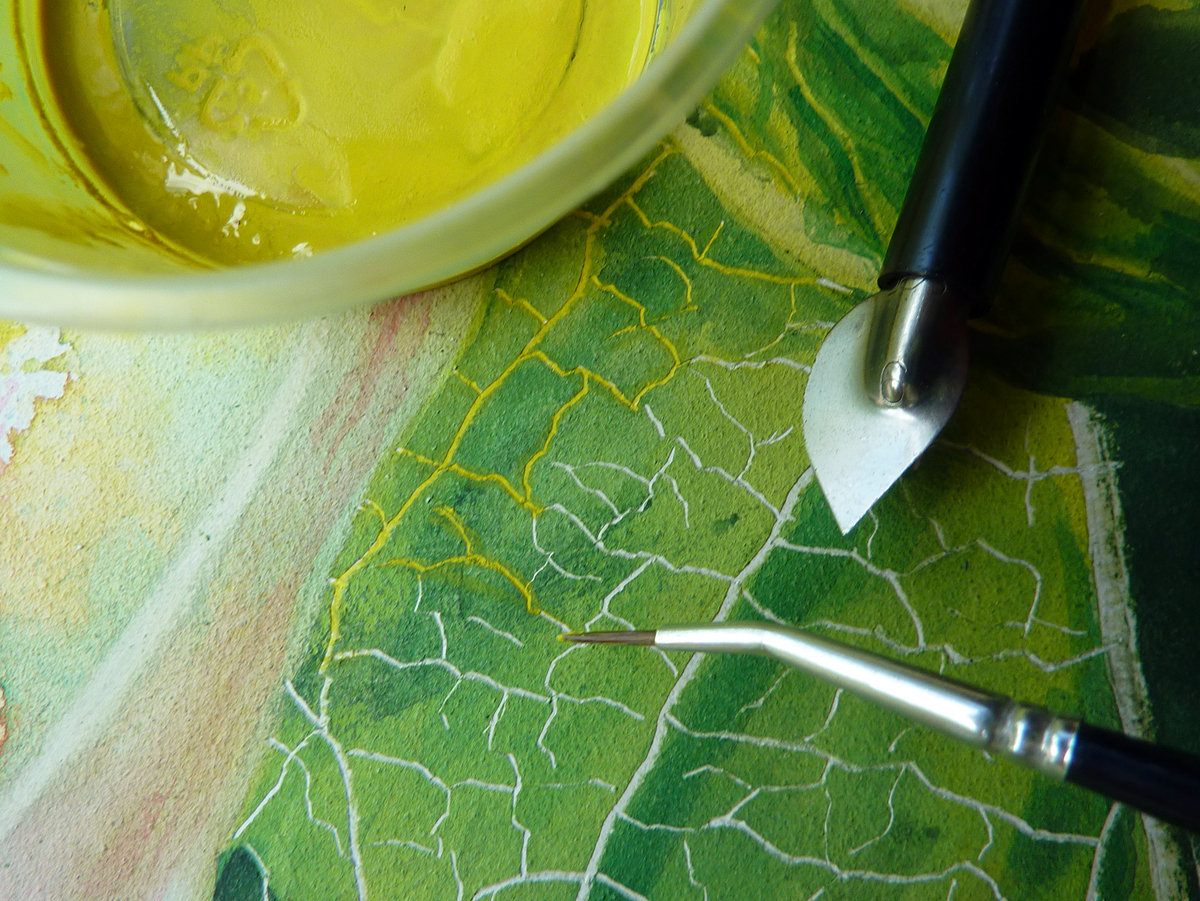
Details: creating leaf veins with watercolor on Aquabord™ for "Honeysuckle"
I was a public school art teacher soon after graduating from college, but I do not offer one-on-one instruction now. My Blog is my primary teaching tool. My posts about individual paintings provide a close study of creating my art, with step-by-step photos of the work in progress. I share my tools, techniques, and sources for my art supplies; I give hints and tips to help fellow artists. Each painting is a learning experience for me, and I share my successes and my blunders. NOTE: You can sign up to receive every new blog post to your email immediately after I post it, using the form at the bottom of every page on this website.
In addition, I have created several narrated slide-shows as Live Presentations, such as one titled “Anatomy of a Watercolor,” to demonstrate my processes of creating art. I produced a 3-hour workshop called “Scratchboard 101” which I hope to present again when our post-pandemic lifestyle allows. I am an Ampersand Art Ambassador, and the company generously supplies me with samples of their Scratchbord™, Aquabord™ and Claybord™ panels for my students to try out and take home.
I also have free how-to Videos on various media and techniques, each running about 25 minutes. If you like my videos, please subscribe to my YouTube channel and you'll get notified when I post future shows.
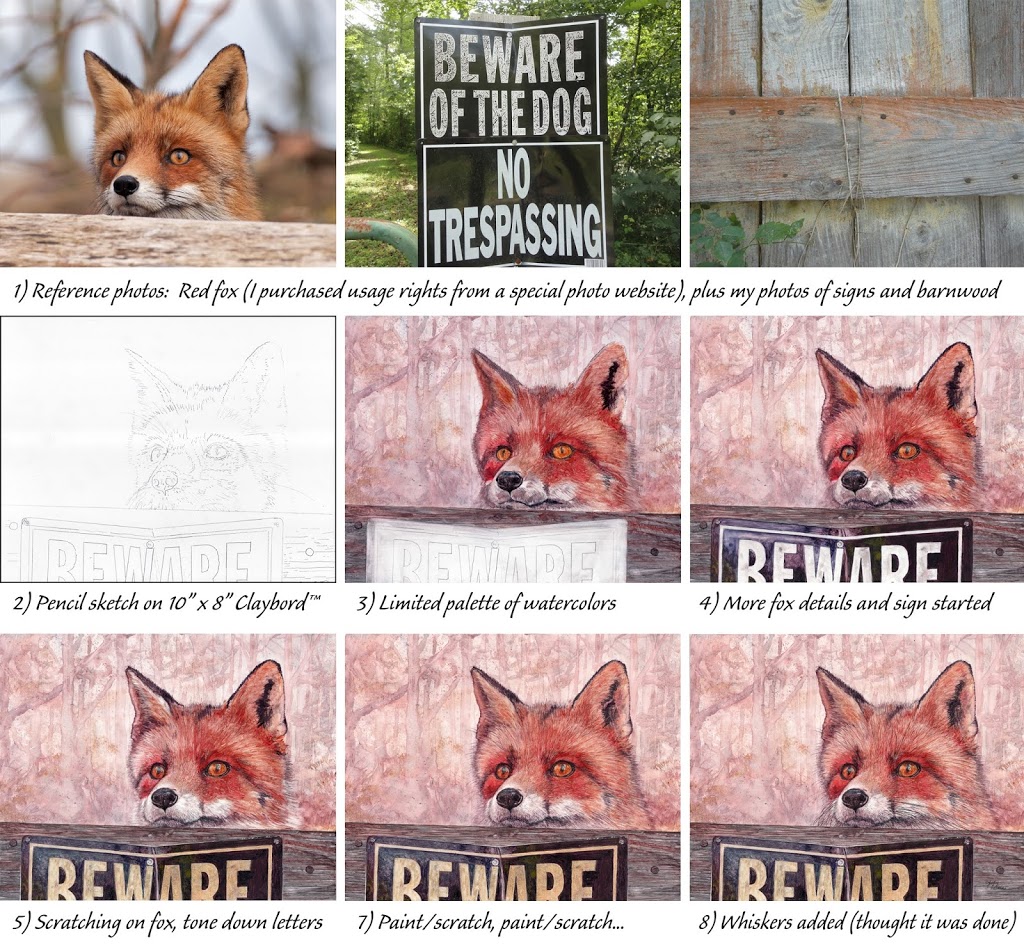
My blog posts show photos of works in process, such as this example for "Beware."
I welcome commissions and you can see samples of my custom paintings here. I have captured the hearts of many with my pet portraits, a favorite subject of mine. Other commissions include house portraits, special places, airplanes, memorable events, and landmarks.
One reason I like to accept commissions is that they challenge me as an artist to tackle a subject I might not chose myself.
My commissioned paintings are most often done in acrylic paints on stretched canvas. The Commissions page includes pricing and tips for providing reference photos to me.
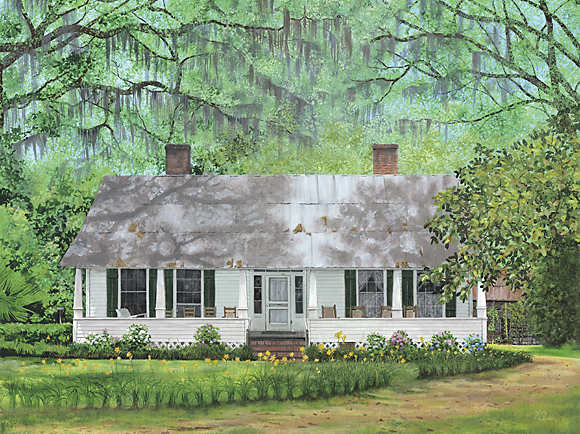
Many years ago I created this farmhouse painting as a commission. It is treasured by the woman who grew up there, who prominently hung it where she enjoys it daily.
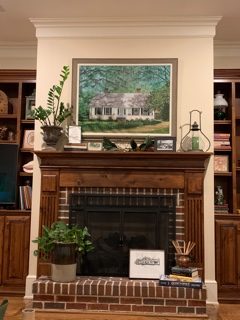
I do not have my own gallery or open studio, but my work is displayed for sale in various locations, listed here. Most of the art I display in exhibitions is also for sale.
My ’studio’ is a wonderful space within our home. A large antique drafting table sits next to a ten-foot north-facing window for ideal natural lighting. I sit on an antique oak piano chair with a seat that twists to adjust the height. My paints, brushes and other supplies are next to me on a 3-shelf rolling cart, with storage for other supplies in an antique tall dresser nearby. This is the first home in which I have had a designated painting area, where I can keep all my art materials set up and handy... it is the best way to work, when you don't have to set everything up and put things away every time you paint.

This is where I paint!
The largest Galleries of my paintings are on this website. You can browse a gallery of originals which are for sale or visit galleries showing a specific medium I work in. Also, each painting's info page gives details about size, framing, availability, price, whether prints can be purchased and more.
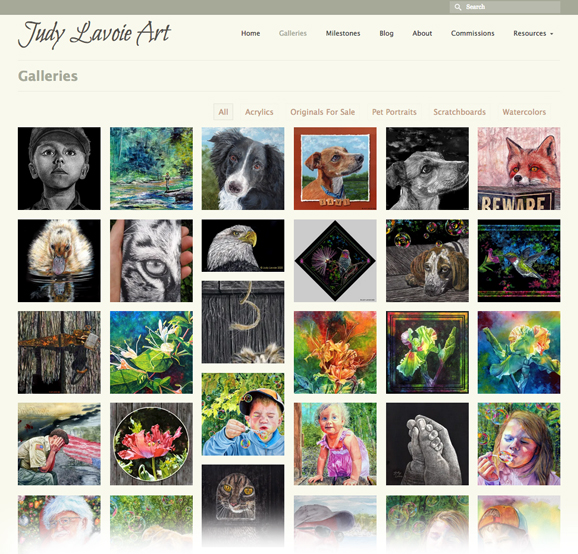
Visit my Galleries on this website for the largest display of my artwork!
For as long as I have been painting watercolors (since 1980), I have done my own mat cutting and framing. This helps to keep my costs lower than if I was paying retail for custom framing, so I can price my artwork at very reasonable prices.
When my artwork fits custom sizes, like 8”x10”, I buy ready-made frames and assemble the artwork with my professional tools and hardware.
For custom sizes, I chose the moulding from a frame shop or online frame supplier, and have it prepared to the size I need.
I offer some originals, commissioned paintings, and prints unframed, so the buyers can select the framing they prefer, to fit their decor and their budget.
In my local area of southeast Tennessee, I happily recommend Fullers Frame Shop in Athens, TN. Tell them I sent you!
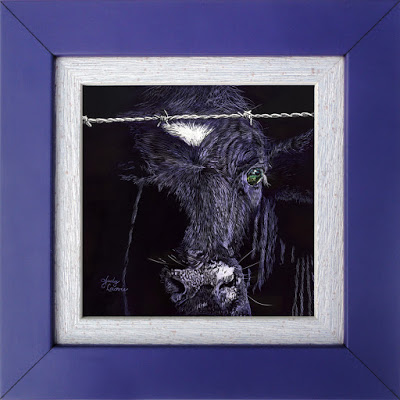
My "Purple Cow" framing consistented of two "stacked" frames, perfectly accenting the coloring as well as the rustic subject.
Fine art prints called “giclées” are considered to be museum-quality and are my primary choice for reproductions of my art. My original artwork is scanned by my subcontractor, creating a digital file. I review proofs as this file is fine-tuned to match the original precisely. Giclees are created on a high-end ink jet printer, with multiple color jets, using longevity inks which are resistant to fading. The prints can be made on archival papers or canvas, so the original artwork can be matched with extraordinary closeness. Giclee prints can be printed on-demand to reduce the need for inventory by the artist. They can be printed in sizes proportionate to the original also, allowing customization to the needs of the purchaser.
For scratchboards I have also created prints on aluminum panels, through a sublimation transfer made from the original digital file. Especially for black scratchboards, these metal prints look amazingly close to the original art.
Read more about my prints here.
Most of my artwork is created from my own photos. My reference photo file is huge; I have a difficult time passing a weathered old barn without wanting to stop and photograph it for a future painting. In most cases, the paintings I submit to art competitions are required to be from my own references (to avoid copyright issues). Also, I have many years of professional experience using Photoshop software, and therefore I frequently combine more than one reference photo in a painting. Read about how I chose and used many different photos from my own reference files to compose my painting “Red Bug.”
In a few cases I work from photos taken by others:
If someone I know has taken a photo which inspires me to create a painting, I get permission from that person to use it as a reference. Such was the case with “Sweet Dreams.”
When my subject is something I cannot photograph myself, I research to find reference photos by others. An example would be if I wanted to do a painting of a wild animal, such as a black bear. Beware of simply searching the internet and assuming you can use any image you find! You cannot: in general, copyright law assigns all ownership and rights to the original artist or photographer, unless otherwise stated or arranged.
It's not always easy to find the photographic reference images you want as licence- and copyright-free images. I acquire photos from sources which are not violating copyrights, such as websites and Facebook groups specifically devoted to providing reference photos to artists. Some of these include uploads by photographers who still retain their own copyright and allow others specific use to create art based on the photos, without restrictions of licence or royalty. Sometimes the photos are made available free, sometimes for a usage fee, sometimes for a one-time download fee. Commonly, documentation provides rules and guidelines about how these photos can be used.
In a few instances I successfully searched Instagram using hashtags, finding photos which would be great references for a planned painting. When I chose my favorites, I contacted the photographer, describing my intention and requesting use of his/her work as my reference. This is how I acquired reference photos for the Anna’s Hummingbird and the Fairy Duster flower I depicted in “Anna’s Fairy Duster,” since both were species from far away from my local area. Both photographers were immediately willing to allow my specific use and each one emailed me the high resolution version of their photo.
Sometimes when I do a commission, the buyer presents me with their photos to work from. This is often true when the subject of the painting is too far away for me to take photos or when the subject is no longer able to be photographed (a building which no longer stands, a pet who has passed away, etc.)
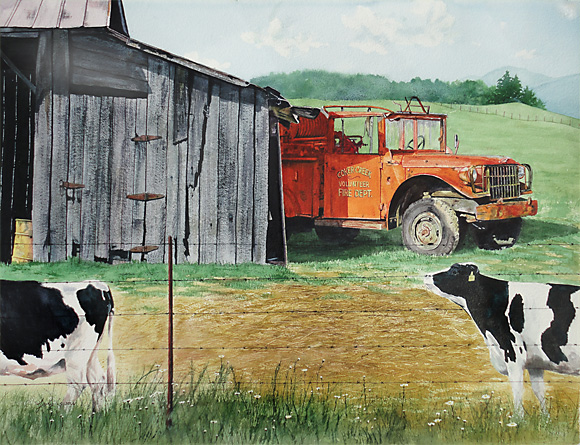
For "Volunteers" I combined six different reference photos!
I seriously strive to title my paintings with something meaningful, but not too lengthy. Sometimes I have a title in mind before I even begin painting, other times I'm still pondering the best name as my painting is finished. I've even asked for votes on my social media and feedback from good friends when I've struggled with selecting the best title.
I've used titles with a touch of humor, such as my colorful cow face which I titled "Eat Chicken." Sometimes my title has multiple meanings, such as "Red Bug," where the title refers to two images in the painting, old Volkswagen and the Queen Anne's Lace flowers (which attract chiggers, AKA red bugs).
When I was thinking about this topic, I surprised myself with how many of my painting titles have been inspired from music titles and lyrics, from all genres. Just look at this list....
Blackberry Blossom
Nature Paints A Picture
Let It Snow
Sunshine On My Shoulder
I’ve Got Sunshine
Heart of Gold
Like A Rainbow
What A Wonderful World
Eye of the Tiger
I’ll Follow The Sun
Morning Has Broken
Let It Shine
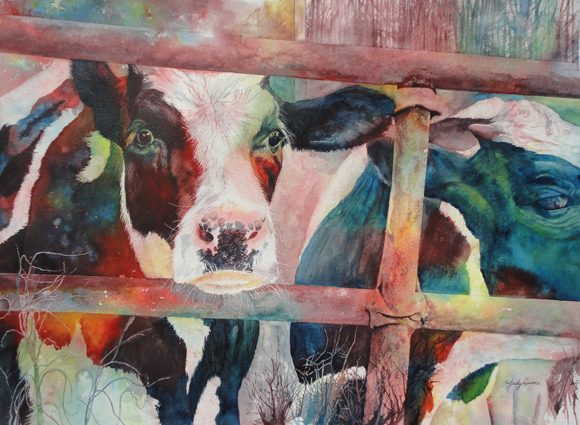
I approach each new watercolor uniquely, so I don't always use the same steps and techniques. However, my watercolor paintings always incorporate many basics, which can easily be used by other artists, beginner to advanced.
To see my steps from start to finish on one of my watercolors, check out my video called "Anatomy of a Watercolor." In less than 30 minutes, I explain and illustrate my process for this award-winning painting, including:
- selecting a reference photo
- importance of values
- choosing the best composition and format
- my preferred watercolor paper
- using a limited palette of colors
- mixing primaries
- warm vs. cool colors
- transferring a sketch to the paper
- techniques: salt, sponges, masking fluid, lifting color, glazes, softened edges, scratching the surface, etc.
Enjoy the show!
